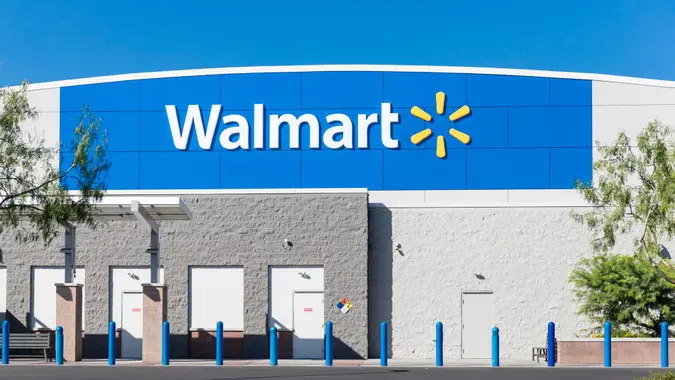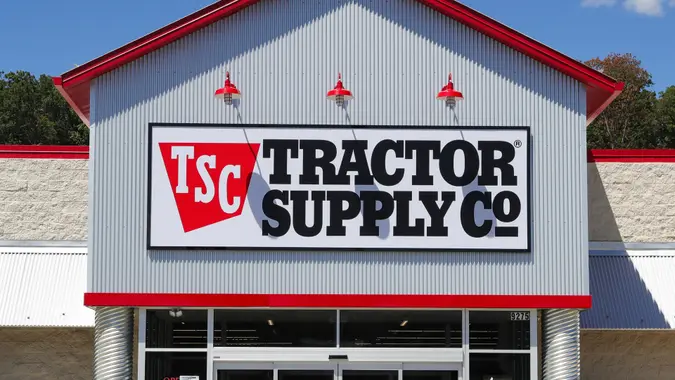4 Things To Consider When Saving and Preparing For a Home Purchase in 2024

Commitment to Our Readers
GOBankingRates' editorial team is committed to bringing you unbiased reviews and information. We use data-driven methodologies to evaluate financial products and services - our reviews and ratings are not influenced by advertisers. You can read more about our editorial guidelines and our products and services review methodology.

20 Years
Helping You Live Richer

Reviewed
by Experts

Trusted by
Millions of Readers
If you have the desire to leap into the world of homeownership, several variables must be considered. An aspiring homeowner should prepare in advance so they can both accumulate enough money to purchase the home and furnish it comfortably once they move it. So here are four suggestions that should help someone save enough money to achieve the American dream.
Determine How Much Money are You Willing To Spend
Determining how much to spend on a house includes multiple factors. For one, you need to figure out how many years you are willing to commit to a mortgage. And how much money you can afford each month for not just the mortgage, but additional necessary expenses like utilities and insurance. One can secure a mortgage that allows you to pay off the loan over 30 years or in a shorter time span, such as 10 years. Equipped with the necessary information, you are ready to create a budget that will guide you in your savings strategy.
Set Your Savings Based on Your Average Rent (and Then Some)
According to the Council for Community and Economic Research’s 2022 annual cost-of-living index, the national average monthly mortgage payment is $1,768. If someone is accustomed to paying the average national monthly rent of $1,516 in the United States, they should begin by saving at least $252 each month.
In addition to the anticipated mortgage amount which includes real estate taxes, homeowners insurance and possibly private mortgage insurance (PMI), one should calculate for gas, electric, water and waste as well. Combine that amount and set it aside as the second step.
This systematic savings strategy is designed to help a prospective buyer become comfortable with paying the mortgage and nondiscretionary expenses without struggling. While the national averages have been used, the goal is to customize the goal with the specific numbers you already researched.
Focus On Accumulating the Resources To Purchase the Home
A best practice for securing the deposit, closing costs and other ancillary expenses is to save an estimated 10%-20% of the house value, unless you are a first-time homebuyer. Then 2%-5% of the house value is sufficient. Simply put, if the house is worth $350,000, that prospective buyer should manage successfully with an estimated $7,000-$17,500. Then one should calculate how much time it will take to save the upfront costs. Are you eligible to withdraw from your retirement plan without penalty? Will you be entitled to an inheritance and if so, can you request an annual gift from your parents? Finally, how much money will you need to furnish the new home?
Starting From Zero Savings Can Take Years, So Be Patient
According to Zillow, it can take a typical homeowner (who is committed to saving 10% of their earnings) 11 years to save for a 20% down payment and the closing costs. It makes sense to sit with a financial advisor to determine your risk tolerance and actual timeline before needing the money. Other variables and options may include the ability to withdraw from your retirement savings, take on a part-time job or systematically invest additional funds that can generate a higher rate of return. The stated options vary based on one’s individual objectives.
However, when a person is close to achieving their savings goal and they are ready to hire a realtor, they should immediately place the accumulated savings into an interest-bearing savings account or money market account. You do not want the money to be subject to any unnecessary investment risk that could cause you to have a potential shortfall at the most inopportune time.
If you stay true to systematically investing the difference between your calculated mortgage payment and current rental expenses, you will be accustomed to making the monthly payment without struggling. Many people consider the cost of purchasing a home but don’t consider the costs associated with staying inside of the home. A new homeowner will be better positioned financially if they exercise discipline. They would have saved money from the moment they decided to buy until the purchase had been made. That money set aside can then serve as emergency cash or reallocated to a new financial goal.
Editor’s note: Dr. Nicole B. Simpson is a dedicated certified financial planner and the CEO and founder of Harvest Wealth Financial.
 Written by
Written by  Edited by
Edited by 

























